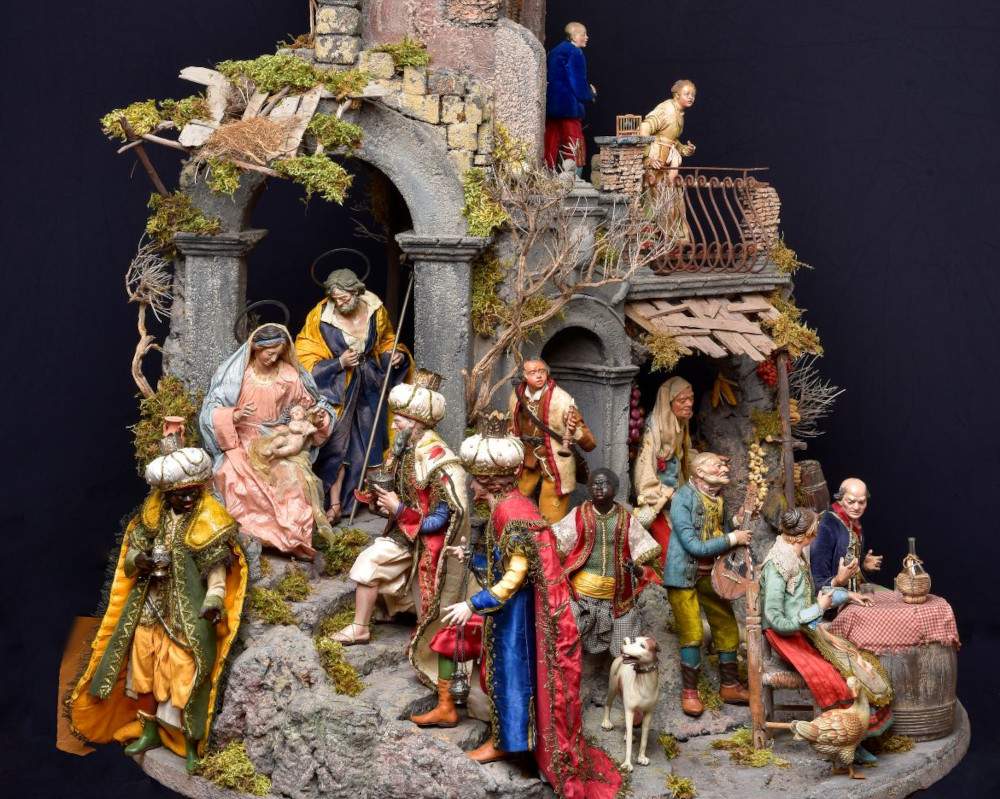An exhibition of nativity scenes of various origins from around the world at the Ambrosiana
From December 1, 2022 to January 31, 2023, the Pinacoteca Ambrosiana will host the exhibition Presepi all’Ambrosiana from the collection of the Dalmine Nativity Museum.
Eleven nativities of various origins: Neapolitan, Lombard, African, and Burmese nativities made with the most diverse techniques, made of paper, “theater-like,” or made with figures obtained from special “cut-out sheets” mounted on rigid supports and arranged in a scene. They were all donated to the Dalmine Museum by a private collector and all date from the late 19th and early 20th centuries. Prominent among them are the reproduction of the Nativity scene made by artist Giuseppe Carsana in 1868 for the Shrine of Our Lady of Sorrows in Rho and the printed transposition of some characters from the famous “Gernetto nativity scene” painted by Francesco Londonio.
The exhibition aims to be a contribution to the rediscovery of the fascination of paper nativity scenes, widespread in Europe since the first half of the 18th century. An artistic and cultural heritage that has been reevaluated in recent years by researchers and collectors, which has given rise to the formation of valuable collections that include the most diverse types.
On display in the Medusa Room is the revolving Neapolitan nativity scene: a classic cork setting, the typical Neapolitan rock, houses this nativity populated by numerous characters. Next to the sacred scene of the Adoration of the Magi are scenes of daily life, such as the tavern with a set table. On the back a shepherd sleeps: it is Benino, a typical figure in the Neapolitan nativity scene who symbolizes the one who has fallen asleep in the old world and is awakening in the new Christian world. Some ancient Neapolitan figures are also displayed at the beginning of the route. These are a Holy Family, two Moors with horses, the latter recalling the figures depicted in the procession of Titian’s Adoration of the Magi, and three Magi of remarkable quality, with finely modeled terracotta faces and glass paste eyes. The beards, hair and even wrinkles: every detail gives great expressiveness to these characters. The clothes are made of hand-stitched silk, adorned with golden trimmings and embroidered canvases.
The Lombard plaster nativity scene, made in the 20th century from 19th-century molds and models, has come down to us in an excellent state of preservation, despite the very fragile material. The iconography of the characters is rich, with figures differently posed and all finished with special care, dressed in tunics according to the Lombard plaster nativity tradition.
The artisanal production of plaster nativity figures in Lombardy was active from about 1700 to 1940 when, almost suddenly, it ceased due to the advent of plastic figures, which were less expensive and less fragile. The statues were made in workshops using wooden casts. The painting and decoration was entrusted almost exclusively to women.
Of the two African nativity scenes, one is carved rosewood, the other is metal with figures of seated musicians. Finally, the Burmese Nativity is made of painted and gilded wood.
The exhibition is included in the ticket to the Pinacoteca Ambrosiana.
Hours: Daily from 10 a.m. to 6 p.m. Closed Wednesdays.
For info: www.ambrosiana.it
Pictured is the revolving Neapolitan nativity scene.
 |
| An exhibition of nativity scenes of various origins from around the world at the Ambrosiana |
Warning: the translation into English of the original Italian article was created using automatic tools. We undertake to review all articles, but we do not guarantee the total absence of inaccuracies in the translation due to the program. You can find the original by clicking on the ITA button. If you find any mistake,please contact us.




























